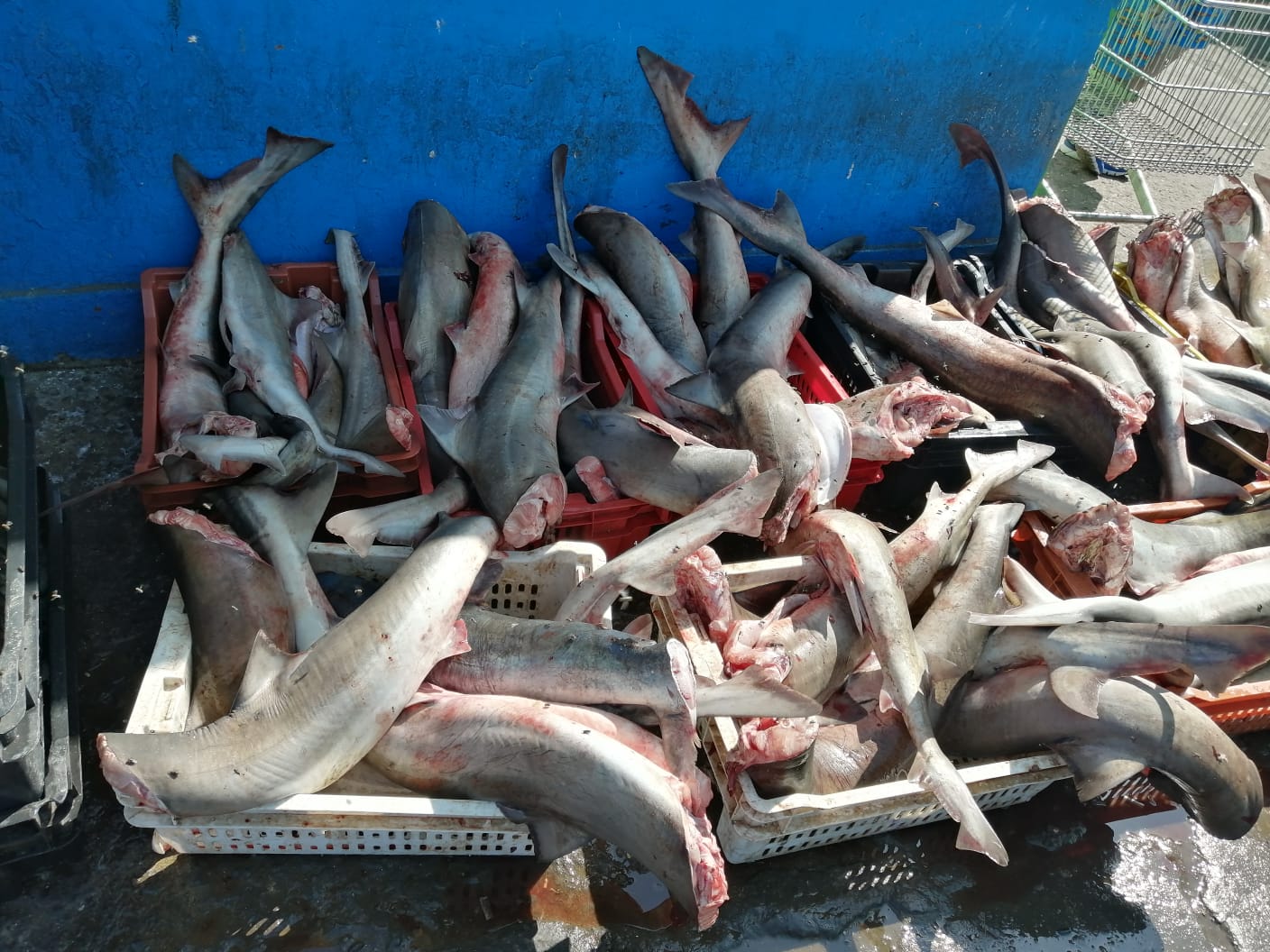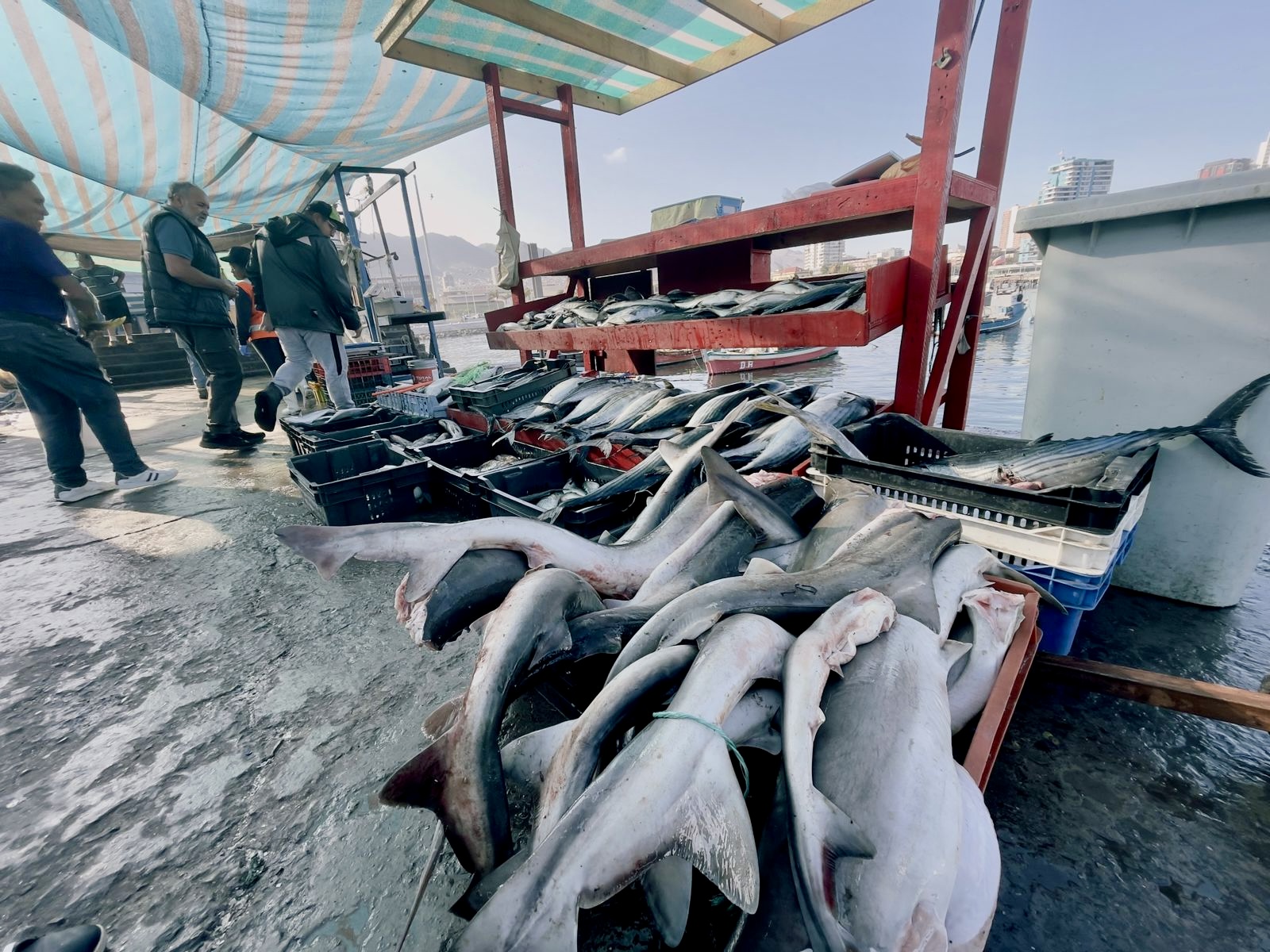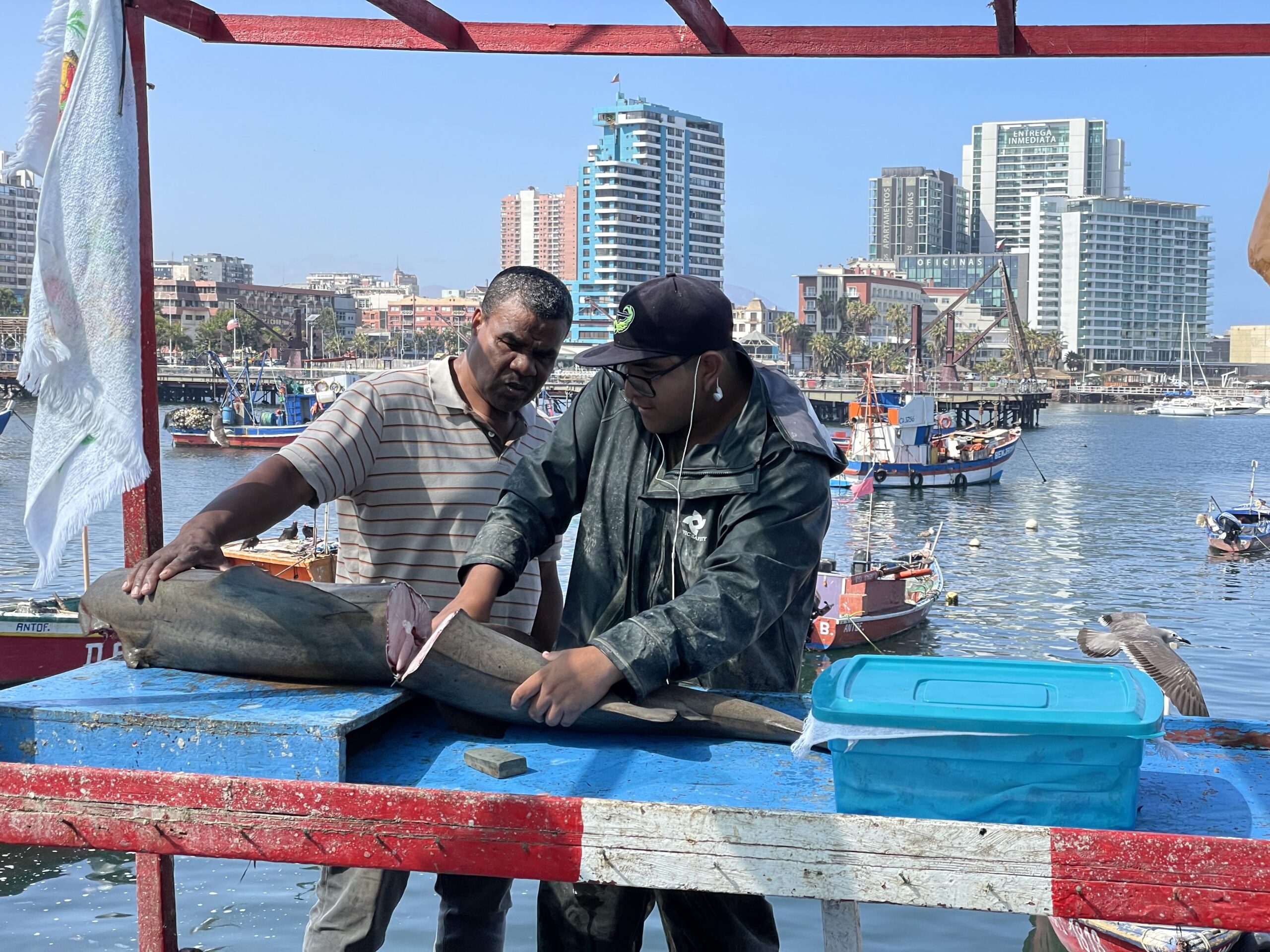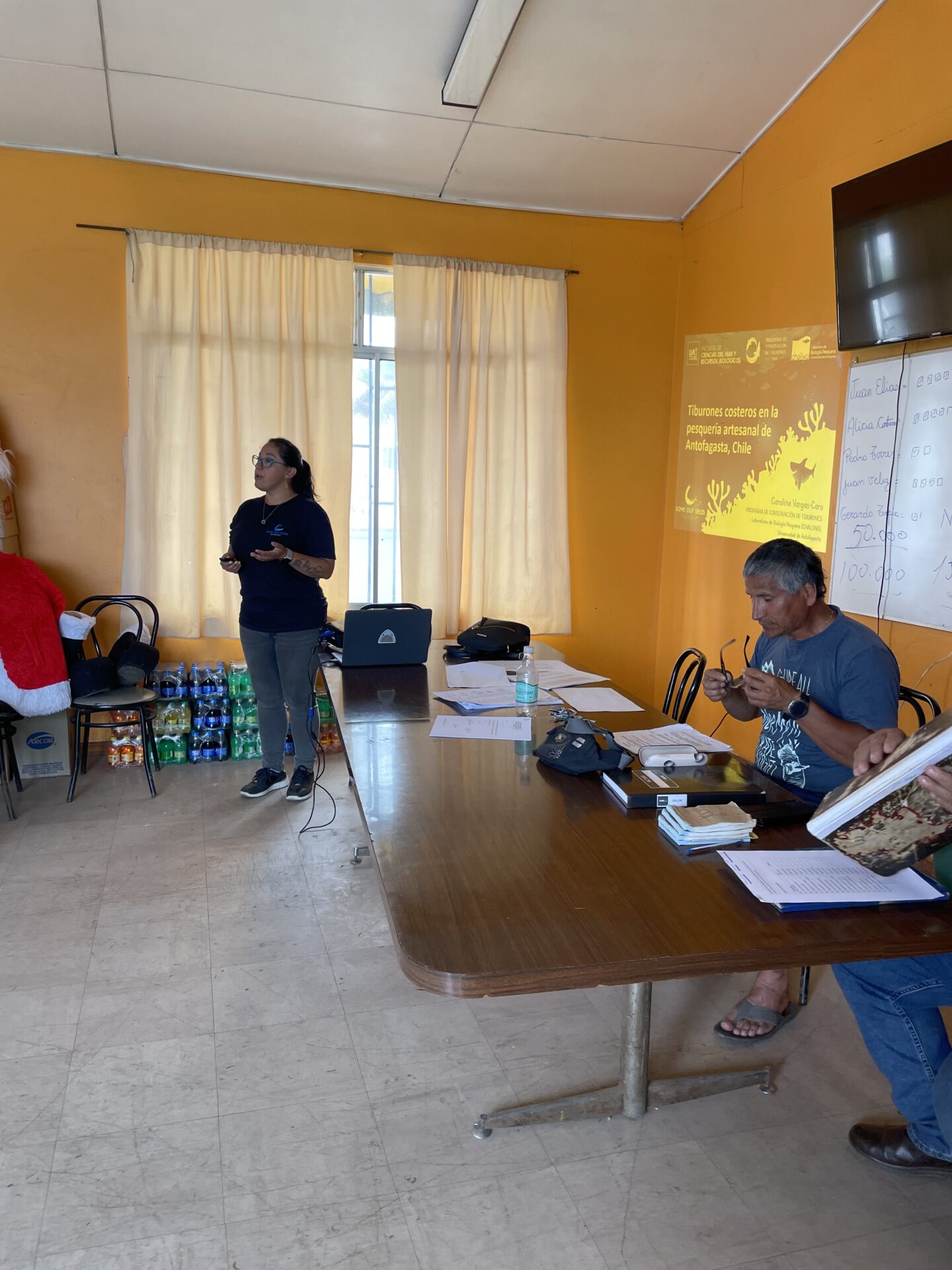Let’s talk about sharks.
In my previous blog, I discussed how we realised that houndshark fishing in northern Chile was much more widespread than previously thought. Although speckled smoothhound (Mustelus mento), humpback smoothhound (Mustelus whitneyi), and spottedhound (Triakis maculata) are relatively abundant in coastal waters and have a long history of being targeted by artisanal fishers and anglers in Chile, these species are not considered a “fishing resource” by the Government and are therefore not subject to species-specific management. Houndsharks inhabiting Chilean waters are listed as “Critically Endangered” by the IUCN, mainly because of population declines caused by overfishing. Therefore, in the absence of management measures to ensure the survival of these species, the role of fishers may become crucial to their survival, as it is necessary to adopt an integrated approach that directly involves fishers and anglers in the recovery and sustainable exploitation of houndsharks in Chilean waters.

Houndshark landing sites in Antofagasta, Chile. Photo © Carolina Vargas-Caro.
We strongly believe that by involving the fishers, we may improve any potential strategy to reduce shark mortality. So we interviewed local fishers about how they “see” sharks: Are they a problem for them (as unwanted bycatch)? Do they catch them intentionally (for trade)? or how they could reduce shark mortality (of unwanted bycatch). In addition, we collected biological information and tissue samples from every shark that arrived at the market, performed molecular procedures in the lab, and analysed the data to assess population connectivity. However, it was not as easy as it sounded. Initially, fishers were reluctant to participate, but if we wanted to succeed, we had to adapt to their routines and unspoken rules… and so we did.

Sharks at the local fish market in Antofagasta. Photo © Carolina Vargas-Caro

Sharks at the local fish market in Antofagasta. Photo © Carolina Vargas-Caro
We uncovered some important findings that highlight the urgency of protecting sharks in the near future. For example, in Antofagasta’s San Jorge Bay, houndshark fishing is a year-round activity. However, the largest catches were recorded during the spring and summer. The most abundant species is the speckled smoothhound (Mustelus mento), and what is most striking is that according to the size distribution, 75% of the catches are immature individuals, a situation that is repeated for the houndsharks landed in Chile.

Presenting our results to fishers and anglers. Photo © Carolina Vargas-Caro

Presenting our results to fishers and anglers. Photo © Carolina Vargas-Caro
These results were both shocking and sad, and highlighted the need to involve fishers in conservation management planning. We learned novel approaches to address the “problem” and new ideas to reduce bycatch and increase shark survival. Fishers and anglers were aware of the small-to-smaller size of sharks being traded, but they did not know the future consequences (in terms of to extinction) of their actions. Now, this situation has changed and researchers and fishers can work together to prevent the local extinction of sharks.
Although the future of sharks may seem urgent to the scientific community, society is quite behind this idea, and we need to try something else to spread shark awareness to the general public. With this in mind, during our collaboration with the Shark Conservation Program (Programa de Conservación de Tiburones)…you know what? stay tuned for the next blog where I will share with you how we did the community outreach process and other exciting news.
